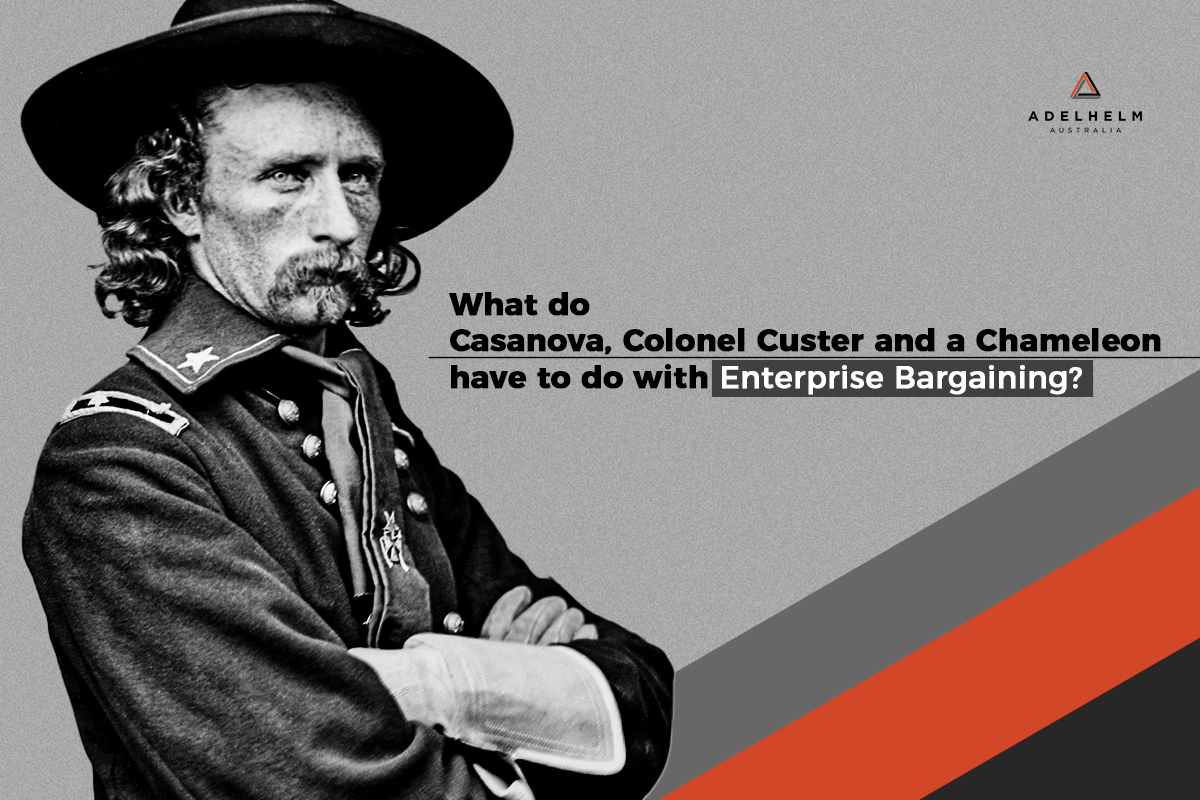
Date
Every year management teams across Australia are baptised into the precarious world of Enterprise Bargaining. Into that mysterious realm of strange acronyms (NERR, BOOT, EBA or is it EA?), exchange rituals (show me yours I’ll show you mine?), procedural mazes where wrong turns bring you face to face with a not-so-mythical minotaur (the Fair Work Commission), and where behavioural norms hail from the very dawn of the labour movement.
Enterprise bargaining is not to be taken lightly. It is a process fraught with risk and long-term consequence. It is a process which has the potential to completely destabilise your workforce, and even spill out over into the shareholder and community interest resulting in market share impacts and reputational scrutiny. Labour costs are likely your largest cost line item, and you are locking these in contractually for up to four years.
Adding to the risk exposure is the fact that management teams are for the most part, always on the back foot. The reality is that unless an organisation has multiple enterprise bargaining agreements (EBA), most management teams bargain every three or four years. Unions bargain for agreements every day of the week. When it comes to negotiating experience, skills, and tactics it is not a fair match from the get-go. Union organisers are savvy, street smart, and they know exactly how to play it because they are likely running every other EBA negotiation in your industry in your region.
So it is not enough to simply know the FWC compliance requirements and be able to “get through” a bargaining process. For organisations to meet on equal footing with unions and achieve workplace reform, sustainable and affordable bargained outcomes which support overall strategy and labour planning, and agreements which set employers up for productivity and flexibility, management teams must challenge themselves to become master negotiators.
So what traits do master negotiators have? What should management teams be aspiring to? You can recognise a master negotiator by their ability to:
So a master negotiator is a Casanova, a Colonel Custer and a Chameleon. But how does one come to develop this exotic cocktail of traits? Well, there are only two ways. One is to bargain for decades, and literally through trial and error build up the chops required. Only few survive this gruelling journey. The other is to get other experienced negotiators to put you in the hot seat, make you dance, test you to withstand the myriad of intimidation tactics that unions dish out for breakfast, and challenge you to stay on course despite sirens that will lure you to shipwreck.
At Adelhelm Australia our challenge is simple: to make our workshop participants, our mentees, our client management teams ready. So when they hit the bargaining table, they feel like they have been there before. Through our workshops and coaching programs, role plays, case studies, simulated negotiations, and playing devil’s advocate to prime management teams we push you to mastery level. And all in a safe and no-risk environment.
From the best consultants in Australia we have pulled together 100+ years of combined bargaining experience to build our program Advanced Bargaining: Strategic Preparation and Tactics, as well as our inhouse Tactical Bargaining program. These programs are full of industry knowledge, simulated bargaining scenarios and challenges to move management teams out of their comfort zone, hone their skills and tactics and think on their feet. Casanova, Colonel Custer and a Chameleon may be an unlikely trio, but trust us when we say it is a magical combination when you see it at work.
For some further insights into influencing, winning people over and the art of negotiation in general:
The Art of Negotiation | Maria Ploumaki I really like the three practical tips Maria gives on how to think and interact during a negotiation. She also highlights how logic and reasoning should not be over-emphasised, but rather how successful persuasion is achieved more by understanding the perceptions of others. I always say the same to our clients when we look at the key attributes of a lead-negotiator – don’t rely too heavily on data and facts! It is a hearts and minds game.
More
articles